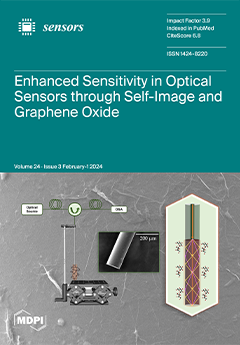Sensors, Volume 24, Issue 3 (February-1 2024) – 328 articles
This paper outlines a method for enhancing optical sensor sensitivity by combining self-image theory with a graphene oxide coating. The sensor, set to a length corresponding to the second self-image point (29.12 mm), was coated with an 80 µm/mL graphene oxide film using the Layer-by-Layer technique. Refractive index characterization of the sensor demonstrated a wavelength sensitivity of 200 ± 6nm/RIU.
Comparisons between uncoated and graphene oxide-coated sensors measuring glucose concentrations from 25 to 200 mg/dL revealed an eightfold sensitivity improvement with one bilayer of Polyethyleneimine/graphene. The final graphene oxide-based sensor exhibited a sensitivity of 10.403 ± 0.004 pm/(mg/dL) with stability, indicated by a low standard deviation of 0.46 pm/min and a maximum theoretical resolution of 1.90 mg/dL. View this paper
- Issues are regarded as officially published after their release is announced to the table of contents alert mailing list.
- You may sign up for e-mail alerts to receive table of contents of newly released issues.
- PDF is the official format for papers published in both, html and pdf forms. To view the papers in pdf format, click on the "PDF Full-text" link, and use the free Adobe Reader to open them.






